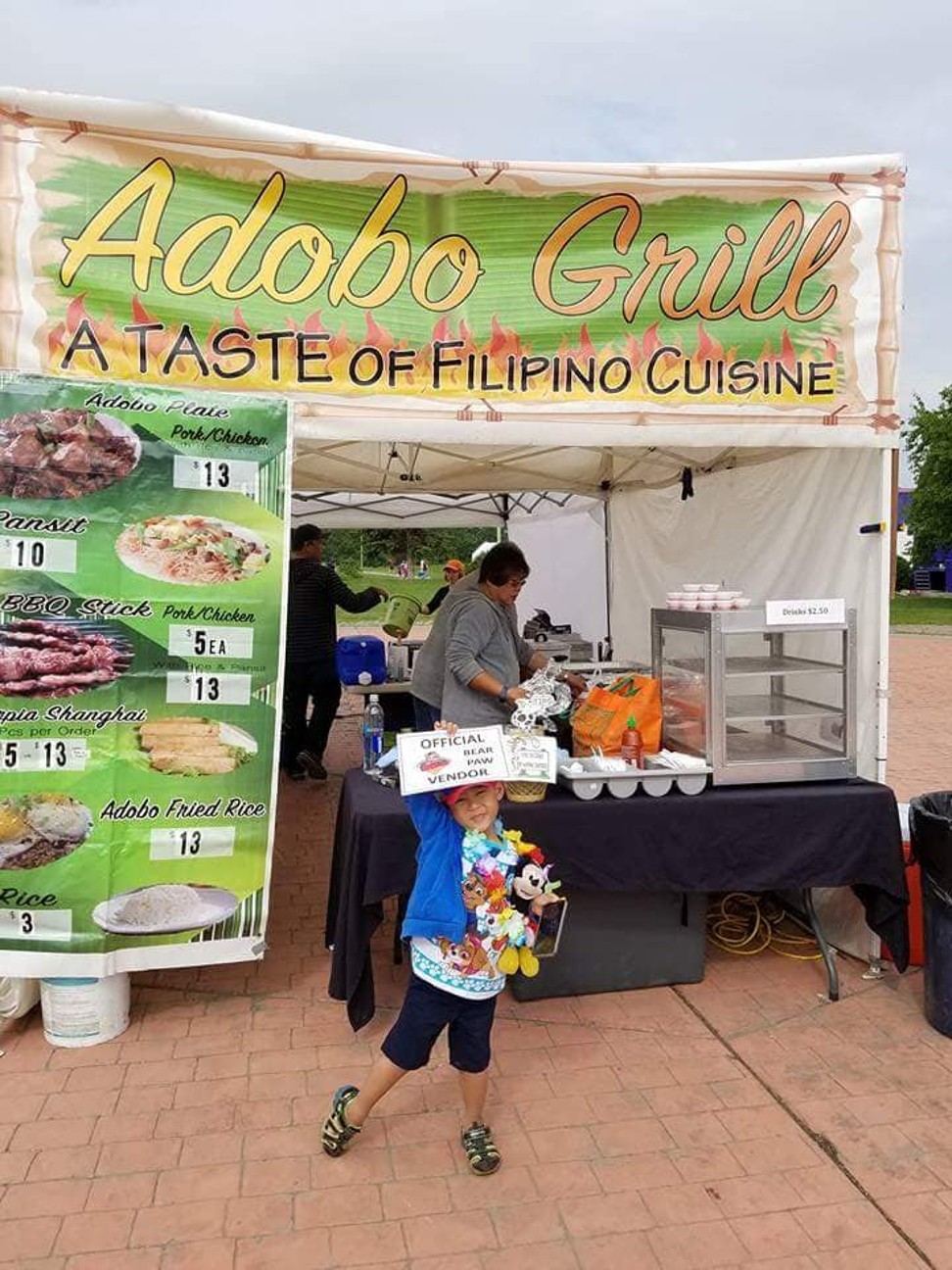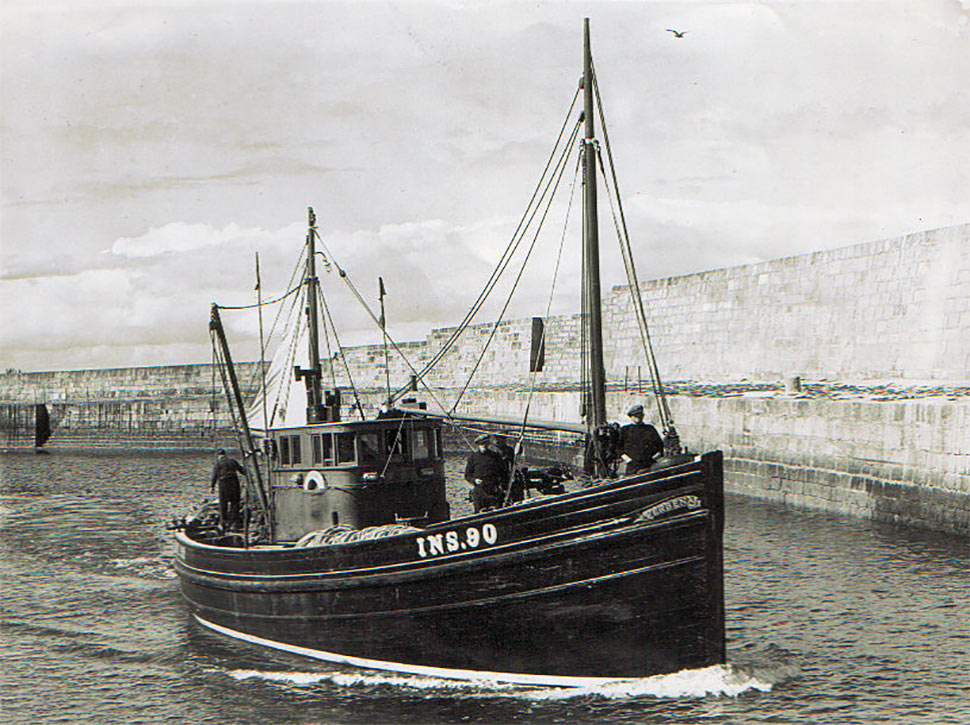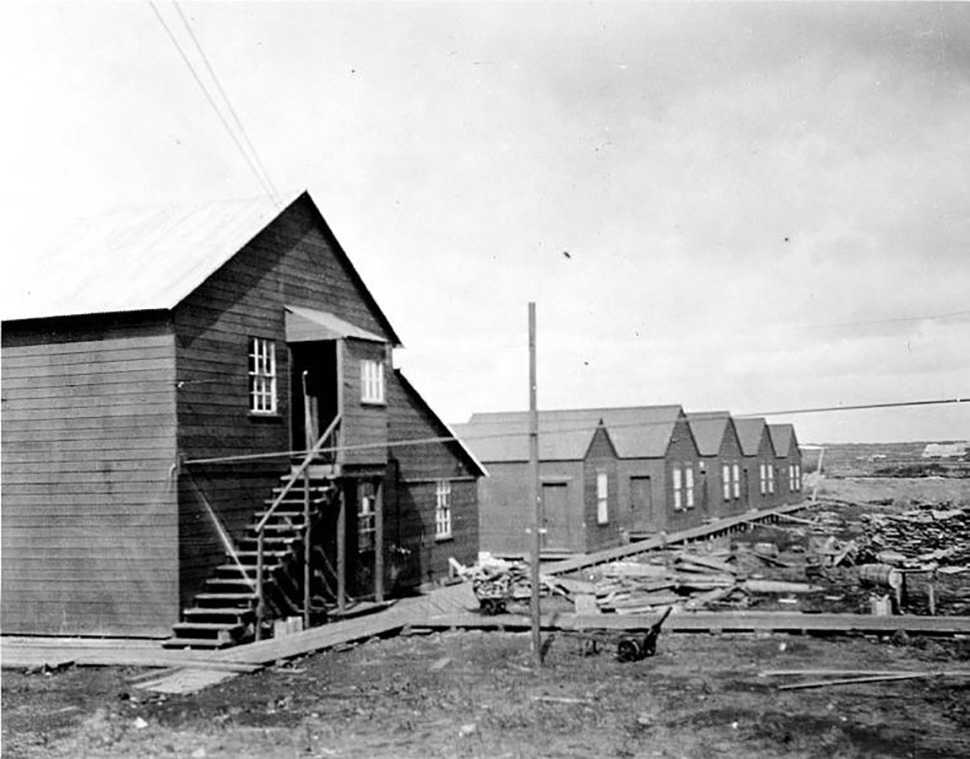AHS Blog
Date Posted: June 18, 2013 Categories: Alaska's Historic Canneries Tags: Alaska Packers Association, Bristol Bay, cannery worker, Chinese, Filipino, food, messhall, Native, Scandinavian, Snug Harbor, South Naknek, Wards Cove Packing Co., Women
By: Katherine Ringsmuth
We all know that salmon have fueled Alaska’s commercial fishing industry for over 100 years. So, if salmon fed Alaska’s numerous salmon canneries, what fed Alaska’s numerous cannery workers? Believe it or not, the answer is not salmon! Although salmon was eaten on occasion, it was not the primary source of nutrition fueling the industry’s workers. Over the century, cannery workers’ diets have consisted of rice, powered milk, coffee, canned goods, doughnuts, salad bars, and prime rib.
I was five years old the first time that I experienced cannery life in Alaska. Eating in the cannery messhall was one of my clearest recollections of that time. Perhaps because each meal was punctuated by the loud shrill blow of the steam whistle, which halted the deafening chug of the cannery machines and peace, if only for 15 minutes, returned to the Naknek River. My family and I ate in the Blue Room (which was always painted yellow for some reason) and we were served by a waitress who brought us our meals on white Chinaplates. The blue room was reserved for the superintendent, the office workers, crew supervisors, and the occasional fish buyer or other VIPs. But, I remember wandering beyond the blue room and into the main hall where the cannery crew ate. The large rectangular room seemed as if it could contain a football field. It had hard wood floors, which supported the twenty or so picnic-style tables, each supporting eight individual seats. The air clinked with the sounds of forks and spoons scrapping the faded green and yellow cafeteria trays and buzzed with the sound of languages a five year old seldom heard—Scandinavian, Italian, Croatian, Filipino, Spanish, and Japanese. I especially loved to wander into the aroma-filled bakery where the head baker—Devona—made fresh doughnuts and cookies by the hundreds. The oven in the bakery was eight feet long and rotated three racks—you could easily bake several hundred cookies or dozens of pies at once.
In those days, the messhall was literally at the center of cannery life. A cannery worker’s day began and ended with the welcomed smells of the messhall. A monotonous, usually wet, and strenuous day of cleaning guts and canning salmon commenced with a 7 am breakfast, at which workers gobbled down eggs, bacon, sausage, toast, pancakes, coffee. At 10 am the whistle blew, announcing the first mug-up of the day. The slime line stopped and workers in yellow rain slickers consumed coffee, doughnuts, turnovers, and other pastries. At noon, workers wandered the boardwalk to the messhall to gulp down fresh made soups, salads, homemade breads, and a main dish such as pizza, burgers, and always a fresh dessert. The goal was to eat in ten minutes and sleep for fifty. At three o’clock came the afternoon mug-up and workers washed down chocolate chip, oatmeal, sugar cookies, macaroon, and even ginger snaps with gallons of fresh made coffee. Five o’clock brought dinner, which often times served as a cannery workers calendar—pork chops on Mondays, steak on Tuesdays, roast beef on Wednesday, fish (usually not salmon) was served on Fridays. At nine o’clock the messhall served the third mug-up of the day, which consisted of deli sandwiches and left over desserts. Finally, if the cannery was operating during the peak of the Bristol Bay salmon run, then there was a midnight meal, at which tired and weary workers ate generous portions of eggs, bacon, sausage, pancakes and French toast in the warmth and comfort of the messhall.
I always remember my father, Gary Johnson, who was superintendent at the South Naknek cannery, saying that his cook was one of his most important employees. He understood that the cannery workers’ trip to the messhall was “the social event of the day.” In fact, he would say that he hired (and fired) his baker depending on how well he or she made maple bars. And indeed, my dad was not the only cannery superintendent that felt this way.
Throughout his many years as superintendent at the SnugHarbor cannery, Joe Fribrock learned that the best workers were content workers, so after World War II, he hired Ralph Havestein, a chef from the Seven Gables restaurant in Seattle to run Snug’s messhall. In fact Joe’s young wife at the time, Dorothy Fribrock, was a bit threatened by Snug’s messhall cook:
“It wasn’t until I tasted the noon day meal, did I agree wholeheartedly with all of the praise Joe heaped upon Ralph’s cooking. His gravy was delicious. I silently noted I’d have to really out cook myself to even get in his league. Every meal was better than the last. Our first night we had individual sirloin steaks over an inch thick, cooked to perfection, O Brian potatoes, two vegetables, cabbage and carrot salad, plus three varieties of homemade bread. Four kinds of cake, tea and coffee. Never in all my life had I seen food in such abundance at one meal. It was like every day was Thanksgiving or Christmas.” [1]
Interestingly, academic studies that discuss the historical significance of the canned salmon industry rarely mention the role of the messhall. They tend to focus on economics, technology, even ethnic and environmental perspectives. But if we listen carefully to the interviews and stories told by people who worked at Alaska canneries, we can conclude that what they ate was important to them and seems to be a common denominator that in many ways, bonded people together. According to Ray DePriest, who worked at Snug Harbor in the 1940s: “Every Sunday [Havestein would] have these Boston cream pies, and then the cream puffs with Chocolate tops.” Not only did Ray and his buddies receive three square meals, but during the salmon peak Ray remembered the nightly mug-ups and a midnight meals that fed the hungriest of growing boys. “We just about ate the cookhouse out of eggs,” recalled Ray, “you really ate like a horse.”[2]
Still, when cannery life is viewed through the lens of food and the messhall, it can illuminate one hundred years of cannery segregation. For years, canneries were segregated by upper echelon of workers and the lower echelon of workers. No one really knows why the Blue Room was called so, but as one cannery foreman suggested, because “the Blue Bloods eat there.” Furthermore, most canneries in Alaska were segregated by race. As Dorothy Fribrock noted about Snug Harborwhen she first arrived in the 1940s, there was a China mess, Filipino mess, and native mess, each with a separate cook.
Indeed, how, where, and what cannery workers ate not only reflects the social milieu of cannery life, but also illuminates exploitive hiring practices, the appropriation of Alaska Natives into the American system of capitalism, gender relations, and finally, racial integration—all aspects that shaped the commercial fishing industry in Alaska.
CHINESE WORKERS
Between 1892 and 1935 the Alaska Packers Association employed a cannery work force that came to be known as the “China Gang.” The Asian cannery workers lived in “Chinatown,” the quarters assigned to them at the cannery. In the legers of the Alaska Packers Association, the details of cannery labor force accounting was summarized under the caption, “Chinese Contracts.”[3]
To fill short term labor needs with cheap labor, salmon cannery operators negotiated with Chinese contractors to hire thousands of Chinese cannery laborers, almost exclusively young male who had little knowledge of English or the customs of a foreign culture. The Chinese contractors hired the crews, supervised them in the canning operation and paid them off at the end of the season. As one historian put it, “The cannery owners divested themselves of having to supervise, bargain, or be concerned with what they perceived as a completely alien work force with a culture which could not be understood.”[4]
Besides hiring and supervising the Chinacrew, the contractors supplied their food and hired their cook. In return, they received a daily per capita sum from the cannery owner for provisions. As historian Chris Friday points out in his study Organizing Asian Labor: The Pacific Coast Canned-Salmon Industry, 1870-1942, “This arrangement allowed contactors an avenue to control workers and gain profits from owners.”[5] Because nineteen century racist attitudes viewed the Chinese as merely a source of labor rather than individuals, cannery owners tended to ignore contractors who exploited and often cheated the workmen. For example, contractors served relatively inexpensive rice, tea, and salmon or “scrap” fish from the cannery, and pocketed significant proportion of the money paid for provisions.[6] In addition, some contractors bought the supplies through their own import—export businesses, which generated even larger profits for themselves. They also added opium to the list of provisions, intended to keep unhappy crews stoned and pacified.
To supplement their meager diets, Chinese cannery workers responded by keeping gardens, they gathered plants and shellfish in their spare time, and bartered with the local Alaska Natives living near the cannery. For example, at the Alaska Packers Cannery at Chignik Lagoon the local Alutiit managed to resurrect familiar practices of exchange by developing a kind of underground barter system with the exotic cannery workers. Chignik resident, August Pedersen, remembered selling bear feet and bear gall bladders to the Chinese workers in exchange for leftover food from the cannery’s messhall at the end of the summer:
My old man [Marius “Pete” Pedersen] …He used to give the Chinamen the feet and the gall. They used it for medicines, and in the fall, they would be pretty decent. [In]Them years, you packed live animals. Pigs. They’d give you a pig, a live pig. Maybe old canned salmon. They’d give you them “dents” they called it, ten, fifteen cases, though, and maybe a couple hundred pounds of rice.[7]
Because contractors seldom provided more than a basic subsistence, an important part of Chinese workers’ activities involved gathering additional food. As Friday notes, “Food and its preparation carry much cultural importance for all Chinese, and each dish supposedly has its own special medicinal qualities.” Thus, in the canneries, where the food varied little and was often inadequate, it is no wonder that Chinese workers went to great lengths to keep gardens, harvest local berries, fish, and clams, and trade with locals to supplement meager diets.[8]
ALASKA NATIVES
Like the Chinese, Alaska Native workers were positioned at the bottom of the cannery’s social ladder. In the cannery pecking order, the highest paid were the Scandinavian fishermen, or the “white crew.” The Italian and Greek fishermen, or “dagos,” as they were called, were paid less for basically the same work. For cannery work such as soldering the tins, cleaning the fish, and packing the cans, Chinese laborers (and later Japanese and Filipino) were paid the least.[9]
At the Alaska Packer’s Ugashik cannery, employers hired a mix of twenty European and American workers in 1889, but no Natives. A year later, twenty Natives were hired to assist one hundred forty Chinese workers in the Fish House.[10] A decade later, a few Alutiit were hired to process fish, but were still excluded from fishing and fish trapping jobs.[11] The reason primarily had to do with food. Canners complained that Native laborers would work only as long as needed to secure a few possessions, then abruptly quit and return to their more traditional food gathering activities.[12] Even a government observer reasoned, “Why should he [the Native] work? Hunger no longer worries him, his immediate wants are satisfied, and he has no others!”[13] Still, as canneries began to experience a shortage of cheap labor due to the Chinese Exclusion Acts passed in 1882 and 1892, they began to hire Native workers, who replaced the Asian crews as the lowest participants in the cannery organizational structure.
Cannery life was an entirely different world than life along the river at fish camp. The industrialized plant was generally dreary, damp and noisy. Belts whined, flywheels whirled and narrow pipes dropping from overhead brought a ceaseless stream of cold water to the work stalls.[14] At Bristol Bay canneries, a combination of Alutiiq, Dena’ina, and Yupik men and women worked in long rows as “slitters” “washers” or “slimers.” In 1910, a group of Inupiaq from the Seward Peninsula seeking cannery jobs migrated to the Alaska Peninsula, where they carved out a life among the mixed Native/Euroamerican population living and working there.[15] Hence, the place name “Eskimo Town” in Pilot Point.
In 1917, when Pete Koktelash, a Dena’ina from Nondalton, was 12 or13 years old, he worked downriver, at the Bristol Bay Packing company located at the mouth of the Kvichak River. Ironically, Koktelash called the plant, that seemed to literally “gobble up” hundreds and thousands of Bristol Bay red salmon, “Hungry Peterson’s.”[16] And even at such a young age, Koktelash was aware of the cultural differences at the cannery:
“When we got to Bristol Bay,” recalled Koktelash, “there were people who had come from everywhere. There were Chinese, Mexicans, Italians, Filipinos, Norwegians, Dutna, Eskimos from other places like the Kuskokwim River, and many others. At that time, no Natives were allowed to fish. The fishermen were the Italians and Norwegians. The Dena’ina were given jobs in canneries with the Mexicans and Chinese. Our job was to “slime” the salmon before they were cooked and canned.[17]
Besides the different people who worked at the cannery, Koktelash also remembers the segregation that separated people:
Cannery workers stayed in bunk houses with other people from their own area. The Dena’ina had their own bunk houses. So did the Dutna, the Eskimos, the Chinese, the Filipinos, and all the other groups. We called the Chinese bunk houses “Chinatown,” and they had their own mess halls.
With out doubt, canneries drastically impacted Native life in terms of increasing ethnic diversity, affecting movement of local settlements, offering wage-paying jobs, advancing systems of credit, disease, and ultimately, change in the reciprocal relationship with the salmon. As ethnographer James Vanstone suggests, “Of all the agents of change…none had a greater or more lasting effect…than the commercial fishing industry.”[18] And indeed, what Alaska Native ate in the messhall contributed greatly to their appropriation into an American capitalistic system. Again, Pete Koktelash recalls eating in the cannery messhall:
The rest of the cannery workers ate together in mess halls separate from those of the fishermen. Meals were good, and we had plenty of food served family style. Sometimes we got homesick for our Dena’ina food, however. The first year I went, I wasn’t used to Gasht’ana [Whiteman] food, and it tasted funny. In time we got used to what they served us and to working with people from all over the world.[19]
WOMEN
As you can imagine, cannery work was even more restrictive for women. Because cleaning fish was considered “women’s work,” such conditions belied the identity of Native men, the traditional fishermen. It was also the reason why cannery employers referred to their Asian crews as members of a “feminine race.” Moreover, although Native women held highly respected positions as the “salmon processors” at fish camp, at the mechanized canneries, the knowledge and skills wielded by Native women to preserve salmon throughout the winter went unappreciated. Indeed, Native women received the guts, but little glory in the industrialized world of the salmon cannery.
Still, the messhall was an avenue through which many women could get a foot in the door of the male-dominated fish packing industry. Although most cannery cooks were men, women were hired as waitress to serve in the Blue Room and to help prep by peeling carrots and potatoes.[20]At the Snug Harbor cannery, for instance, Dorothy Fribrock recalled that a woman named Linda Stout began as a waitress and later became cook after Ralph left.
In fact, the cannery messhall provided women a place to bond. Dorothy Fribrock recalls that during the early part of the 1947 season, the waitress Inga and house keeper Florence Holt were the only other women in camp. As a result, Dorothy often spent the time after dinner in the messhall, hemming her Swedish napkins while the women cleared and set the tables for the next day.[21]
Claiming a “woman’s touch” in recollections, most cannery people agree that the messhall provided them a bright spot in what might be considered a cannery worker’s gloomy day. When the first fresh fruit of the season arrived by barge everyone in the messhall enjoyed the treat. Others remember the wild flower bouquets the waitress placed at the center of the messhall tables. More than a few cannery romances blossomed in the messhall. Dorothy Fribrock recalls such a story:
“Diane Strasberg replaced Inga the next year in Snug’s Kitchen. Diane sang folk songs in her small sweet voice as she helped Ralph in the kitchen. She lived upstairs over our quarters and painted two of the rooms, one in pastel stripes and the other with a rose flowered border. Clem Tillion, with his derby hat who came calling much to Ralph’s annoyance. These flirtations continued through the summer. The third year Diane didn’t return. Later she marred Clem and they settled in Halibut Cove. She became a famous Alaskan artist, first with her sepia colored octopus ink drawings and later with her sculptures. Clem went on to the Alaska Senate and became a member of the North Pacific Fisheries Commission.”[22]
FILIPINOS
Throughout the early twentieth century, Filipinos cannery workers replaced Chinese workers excluded from working in the United States. Filipino migrants spoke English, therefore, it made it easier for them to communicate and interact with other cannery workers. Because canneries like Snug Harbor were smaller than most Alaskacanneries, lines of separation were more subtle, so much so that people on either side of the line rarely considered the social significance of their actions. It was “just the way things were done,” explained cannery worker Barbara Kistler. “There was about thirty Filipinos, and they had their own mess.” She also added “they had the best doughnuts.”[23]
And, in spite of separate bunkhouses, messhall, even separate foremen, one thing American and Filipino workers shared equally was the Fourth of July, for the Philippines and the United States both celebrated their nation’s independence on that day. “At the canneries in Alaska,” then “it was THE holiday.”[24]According to numerous recollections, “The Filipinos would prepare for the festivities all through June, drying fish and getting things ready for the big event. There were games in the afternoon of the Fourth, followed by dancing in the evening, with sun dried fish for all and many other foods.
Despite all the social interaction that occurred in canneries, Filipinos were still officially segregated from other groups, and at too many Alaskan canneries, they were made to feel like second class workers.[25]For the most part, they held the undesirable jobs, slept in the worst bunkhouses, and endured derogatory remarks from the Euro-American crews. In 1982, cannery workers from Kenai and other canneries brought a class action suit against the plant’s owners, Wards Cove Packing Co., alleging employment discrimination on the basis of race. After spending years in the Court of Appeals, the case finally concluded in December, 2001. As much as the court disapproved of employment practices that existed at the canneries, the plaintiffs could not prove that these practices violated Title VII of the Civil Rights Act of 1964 that prohibits employment discrimination based on race, color, religion, sex or national origin. Thus, the judge dismissed the complaint.[26]
CANNERY WORKER
Still, by the 1970s most canneries maintained integrated messhalls. At Snug Harborthe Blue Room was transformed into a mug-up room for all employees. At the cannery in South Naknek, the Filipino messhall was closed long before the law suit made most Alaskans aware of the situation. Dorothy speculates that the cannery “apartheid system” gradually changed in Cook Inlet because, “there really wasn’t a need to be separate.”[27]Dorothy reasoned that with the abolishment of traps, the increased contact between management and fishermen, and daily interaction among workers “shooting the breeze,” gradually wore the old system down.[28]
By the 1970s, a generation of college students began to work at canneries throughout Alaska. Thanks to bi-pass mail, they drank fresh milk, enjoyed fresh fruit, and ate fresh veggies from the messhall salad bar on a daily bases. And most significantly, these self-proclaimed vegetarians also sought out more integrated relationships with their coworkers than the more segregated meat and potatoes generations of the past.
In 1981 Californiacollege student Kristen Kelly wrote about her experience in an article titled: “Cannery Workers, We Come and We Go”:
“On the occasional night off…the egg house crew spends time in the Japanese’s bunkhouse exchanging friendly ethnic songs and sprits. There are private parties whenever time allows, but the three recognized during the season are the Italian fishermen’s barbecue around the Fourth of July, and the Japanese and Filipino parties near the end of the season. All three groups prepare ethnic foods and the celebrations provide a means of letting off steam as well as enhancing a feeling of camaraderie among us all.”[29]
The last time I visited South Naknek, I walked around old dilapidated buildings that comprise of China Townand I briefly entered the old Filipino messhall, which was used as storage for the main cookhouse. Since that day, I have thought about the people who slept in the cold and cramped spaces, who shared meals together, and contributed to making of the Canned Salmon industry in Alaska. It’s strange, but you feel as though something—or someone is watching. Indeed, Food for Thought.
https://alaskahistoricalsociety.org/tag/filipino/












